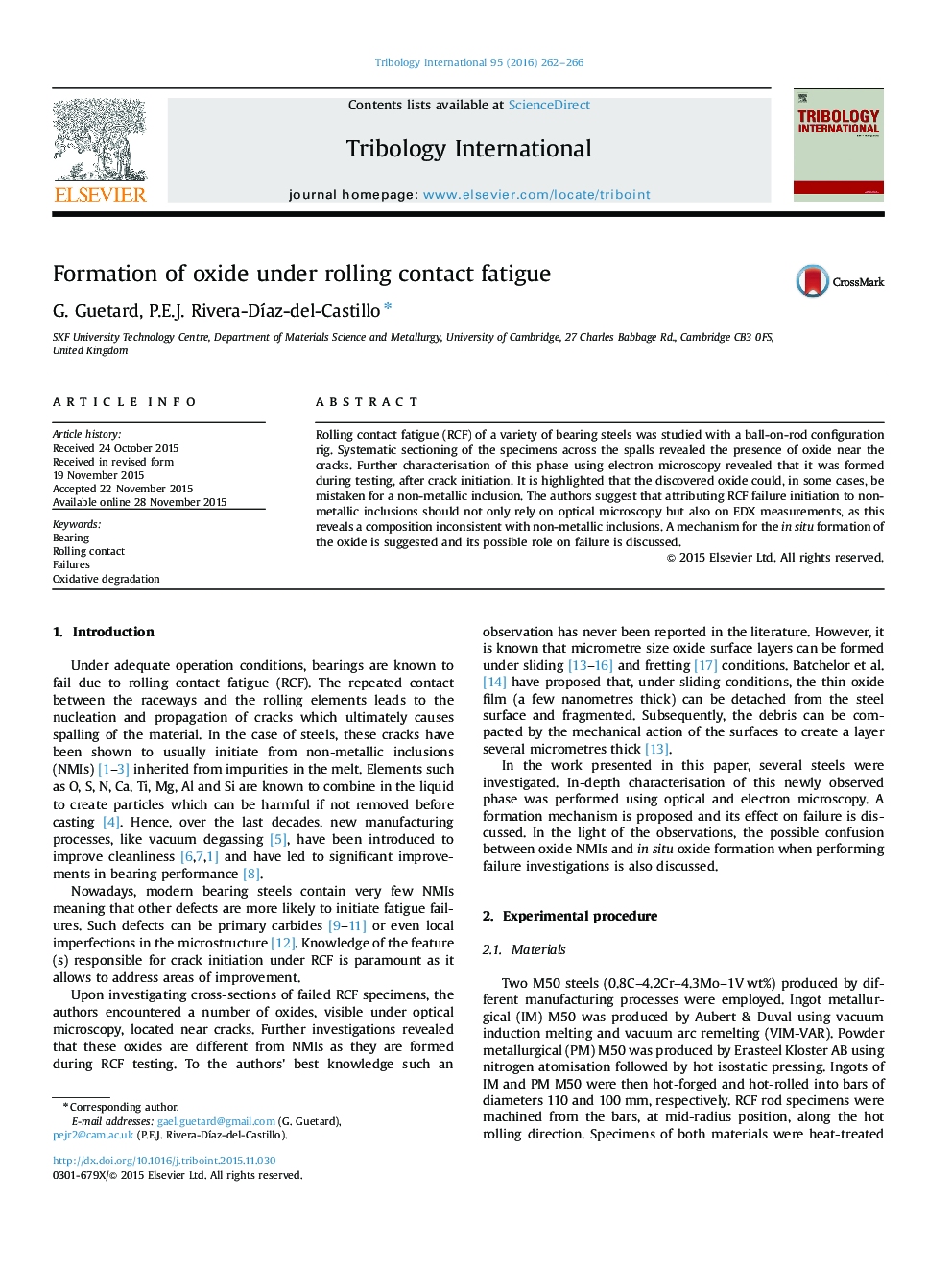| Article ID | Journal | Published Year | Pages | File Type |
|---|---|---|---|---|
| 7002696 | Tribology International | 2016 | 5 Pages |
Abstract
Rolling contact fatigue (RCF) of a variety of bearing steels was studied with a ball-on-rod configuration rig. Systematic sectioning of the specimens across the spalls revealed the presence of oxide near the cracks. Further characterisation of this phase using electron microscopy revealed that it was formed during testing, after crack initiation. It is highlighted that the discovered oxide could, in some cases, be mistaken for a non-metallic inclusion. The authors suggest that attributing RCF failure initiation to non-metallic inclusions should not only rely on optical microscopy but also on EDX measurements, as this reveals a composition inconsistent with non-metallic inclusions. A mechanism for the in situ formation of the oxide is suggested and its possible role on failure is discussed.
Related Topics
Physical Sciences and Engineering
Chemical Engineering
Colloid and Surface Chemistry
Authors
G. Guetard, P.E.J. Rivera-DÃaz-del-Castillo,
